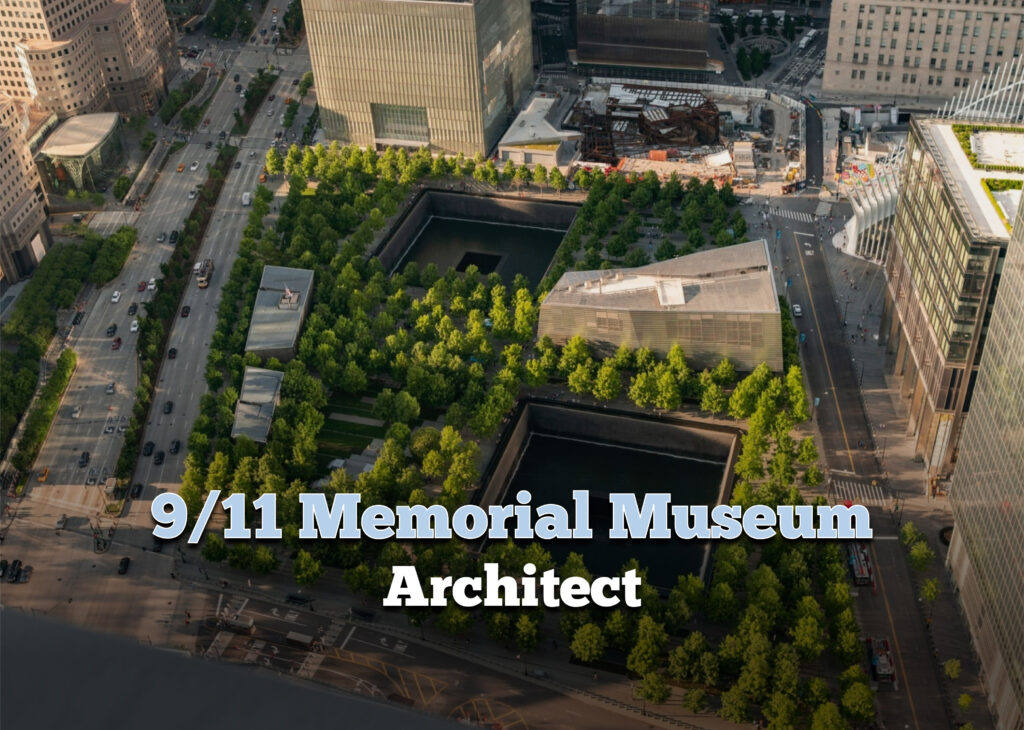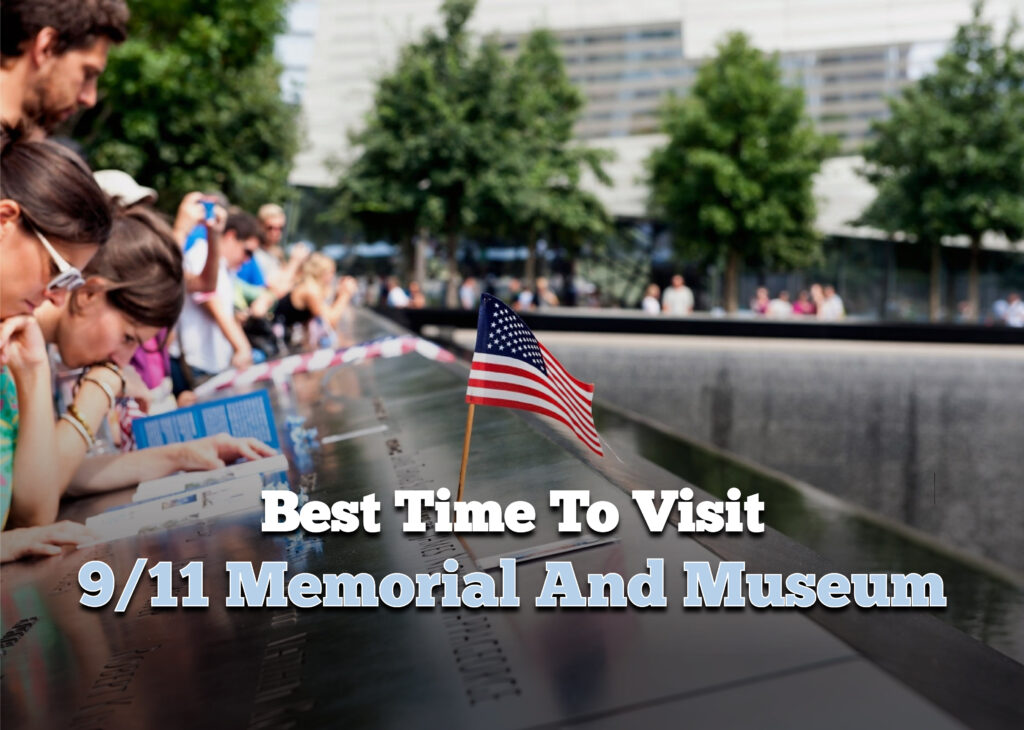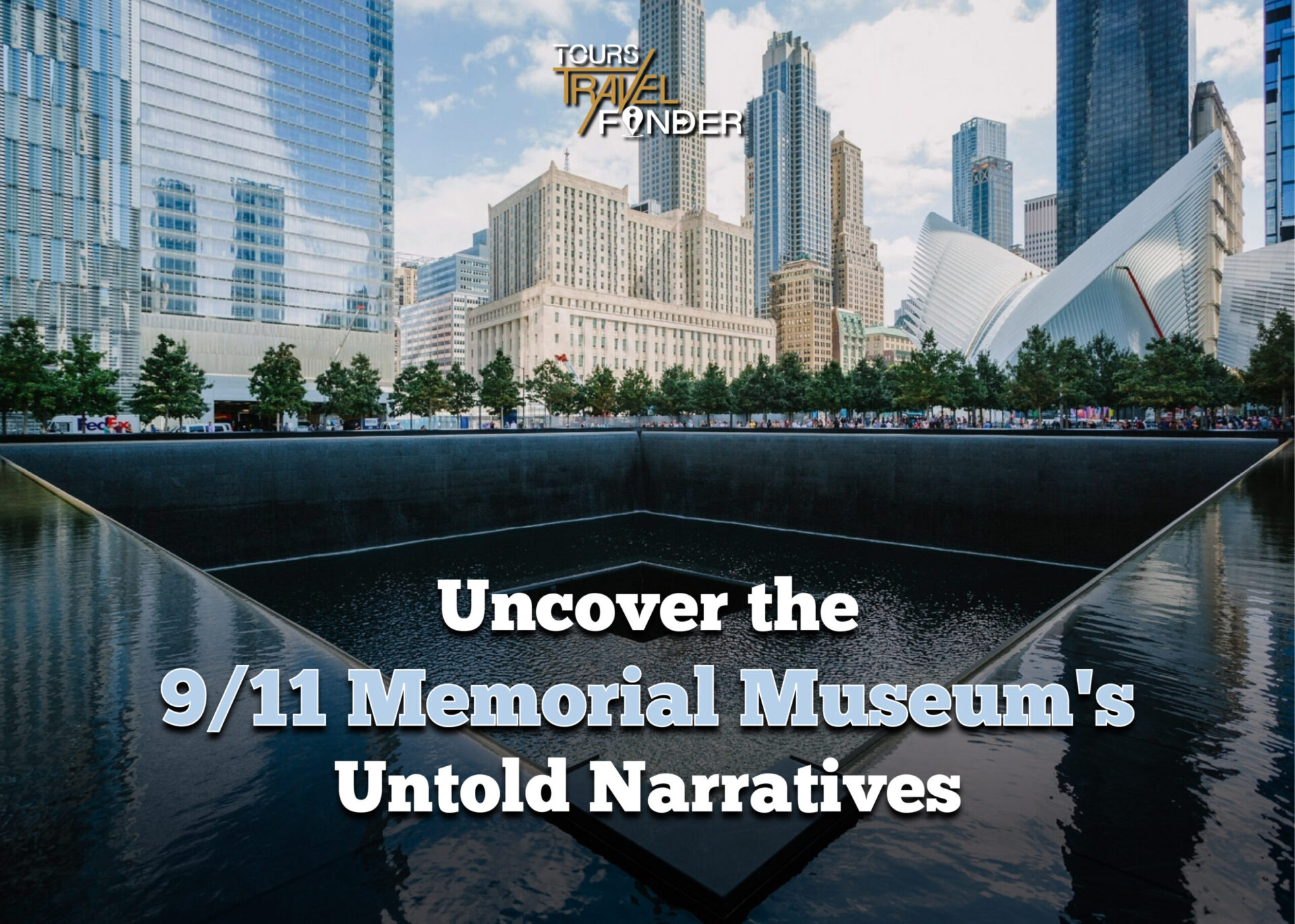The 9/11 Memorial Museum is a tearful gratitude to the lives lost as well as the enduring spirit of resilience that grew from the tragic events of September 11, 2001. This gloomy museum, situated at the World Trade Center site in New York City, offers an insightful and immersive experience, helping visitors to think on the implications of that horrible day. This museum serves as a painful reminder of the need to commemorate the past while creating a future established in compassion, cooperation, and a collective vow to never forget as a living respect to the perseverance of the human spirit.
Table of Contents
9/11 Memorial Museum Architect

The 9/11 Memorial Museum was sketched by the Norwegian architecture firm Snøhetta, in partnership with Davis Brody Bond. Snohetta was elected for the project as an outcome of a global design competition held in 2004. The firm’s schedule stood out for its focus on the site’s historical significance as well as its commitment to creating a location that fosters thought, memory, and resilience.
The museum’s design, which was completed and made available to the public in May 2014, reflects a combination of urgency and hope. The architects wanted to incorporate the museum with the surrounding urban setting while incorporating all that was lost endured on that fateful day. The “Glass Pavilion,” as the entrance pavilion is known, is an open framework that allows natural light to flow into the room, supplying a sense of freedom and openness.
The museum relaxes seven floors below ground, retaining the Twin Towers’ footprints and creating an intimate and relaxing environment. Artifacts, multimedia displays, and personal stories capture the events of 9/11 and what followed in the exhibition areas. The visual appeal plays a major role for leading visitors through the indicated emotional journey, from the immediate effect to the stories of survival, recovery, and dedication.
The “Last Column,” a steel beam that first upheld the South Tower and became a symbol of hope all over the recovery efforts, is one of the most exceptional parts of architecture. This artifact, along with others, is purposefully incorporated into the museum’s design to provide an emotional connection to the events of 9/11.
Snhetta’s architecture for the 9/11 Memorial Museum accomplishes a careful balance of commemoration and instruction. The building elements have been carefully created to respect the past, deliver consolation to the present, and inspire young people to pause and reflect on the enduring impact of September 11, 2001.
What is in the 9/11 Memorial Museum
The 9/11 sacrifice Museum, found in New York City at the World Trade Center site, is a vibrant and solemn institution which serves as an honor to the events of September 11, 2001. The exhibits of the museum have the goal to provide visitors with an in-depth awareness of the historical context, the date of the attacks, and their significant impact on individuals, families, and communities. The following are some of the main features of the 9/11 Memorial Museum:
Historical Exhibition:
The Historical Presentation, which traces the events following up to the attacks, the moment of the assaults, and their aftermath, is at the core of the museum. Visitors learn an intricate and emotional knowledge of the sad events with a combination of artifacts, photographs, audio recordings, and personal accounts.
Foundation Hall:
The famous “Last Column,” a 36-foot tall titanium column written with messages and memorials from rescue and restoration workers, is situated in Foundation Hall, a huge room that includes large pieces of the Twin Towers. The immense length of this hall provides a destroying reminder of the scope of the damage that occurred.
Survivor’s Stairs:
The “Survivor’s Stairs” are an antique staircase that provided a way of escape for many individuals on the day of the attacks. These stairs, especially kept within the museum, offer an actual connection to the stories of preservation and perseverance.
Reflection on 9/11:
The show focuses on the true tales of people who had been directly affected by the events, with interviews, artifacts, and personal things from victims, survivors, and first responders. It elevates the awful event and pays respect to the lives that have been lost.
In Memoriam:
The In Remembrance display pays admiration to the approximately 3,000 persons who were killed on September 11, 2001, and in the World Trade Center attack in 1993. A Memorial Wall with photographs and detailed information about each victim is included.
Recovery and Relief:
This section of the museum explores the recovery and relief efforts that took place in the aftermath of the attacks. It showcases the resilience of individuals and communities and the global response to the tragedy.
When did the 9/11 memorial museum open?
On May 21, 2014, the National September 11th Memorial & Museum formally opened to the public. The museum recalls the events of September 11, 2001, especially the terrorist attacks on the Two World Trade Centers and the Pentagon, and is found at the World Trade Center site in New York City.
Best time to visit 9/11 Memorial and Museum

The best time to visit the 9/11 Memorial and Museum in terms of smaller rush and potentially more pleasant weather is usually during the off-peak times. Weekdays, particularly those that start in the morning or late in the afternoon, aren’t as overcrowded as weekends. Additionally, coming during the off-season or over the colder months may result in fewer visitors.
Consider that weekends, holidays, and the summer months can bring bigger crowds. Personal choices, such as whether you enjoy a peaceful atmosphere or don’t mind a bit more hustle and bustle, should also be taken into account.
It is essential to check the official website or call the 9/11 Memorial and Museum for the most recent details on its hours of operation, special events, and any other changes.
9/11 Memorial Museum ticket
Memorial access pass – This pass is designed for people who desire to visit the outdoor Memorial Plaza but are not planning to enter the Museum. You need to make a reservation. In this case Tours Travel Finder can help you as fast as possible.
It’s important to keep in mind that these fees are subject to change, and it’s usually a good idea to check the 9/11 Memorial and Museum’s official website for the most accurate ticket prices, discounts, and any changes in rules or hours of operation.
Additionally, because of the moving forward COVID-19 epidemic, changes in ticketing techniques, hours, and other visitor details could arise, hence it is important to verify everything before hosting your visit.
Conclusion:
A journey to the 9/11 Memorial and Museum is an intense and severe experience that enables visitors to get an improved knowledge of the human stories, resilience, and collective spirit that emerged in the days following the events of the attacks. The museum’s antiques, stories and interactive displays all contribute to an accurate and respectful presentation of 9/11’s historical significance.
The 9/11 Tribute and Museum stands as vital and enduring contributions, ensuring that the memories of those lost are preserved for future generations as a symbol of remembrance and a testament to the endurance of the human spirit. It acts as both a sadness reminder of a disaster and a homage to the perseverance of individuals, communities, and the country in the face of tragedy.
Are there guided tours available?
Yes, guided tours are provided at the museum, which are given by experienced docents. The official website provides details about tour alternatives and planning.
How much time should I allocate for a visit?
The advised visit time is two hours, but it can vary based on individual preferences. Certain visitors may want to spend a little longer studying the displays and considering the contents.
Are there facilities for storing belongings during the visit?
Yes, the museum provides coat and bag-check facilities. Large backpacks and luggage are not allowed inside the museum.
Can I purchase tickets in advance?
Yes, it is sensible to buy tickets in advance through Tours Travel Finder to secure your preferred entry time and streamline your visit.




